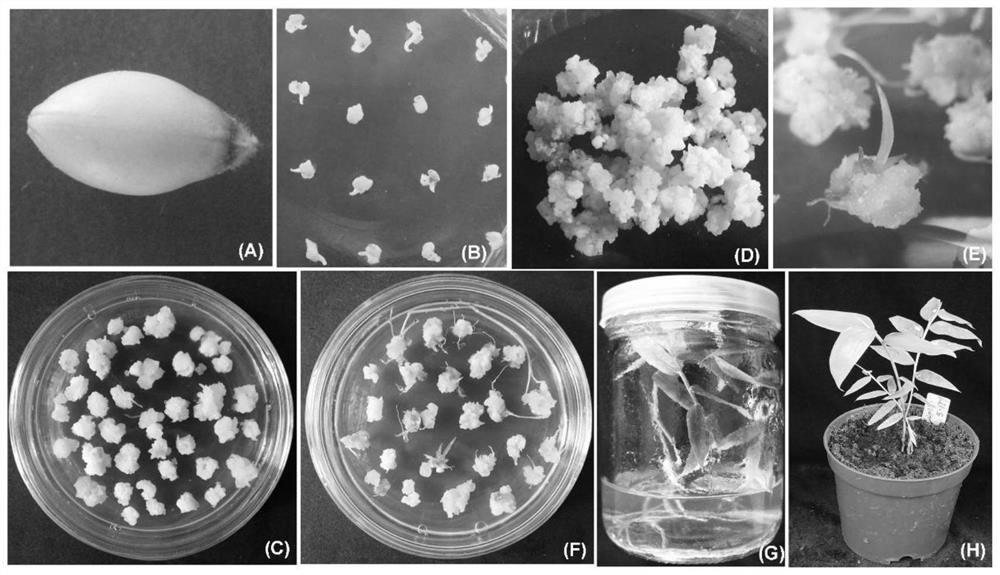A kind of method for in vitro regeneration of immature embryos of hemp bamboo
An immature embryo, in vitro regeneration technology, applied in the field of plant tissue culture, can solve the problems of difficulty in disinfection and sterilization of shoot tip explants, low efficiency of embryogenic callus induction, low frequency of adventitious bud differentiation, etc. Effects of induction frequency and adventitious bud differentiation frequency, increasing adventitious bud differentiation frequency, and expanding explant types
- Summary
- Abstract
- Description
- Claims
- Application Information
AI Technical Summary
Problems solved by technology
Method used
Image
Examples
Embodiment 1
[0029] like figure 1 As shown, the present embodiment provides a method for the in vitro regeneration of immature embryos of hemp bamboo. The immature hemp seed (30 days after flowering) is surface sterilized with 75% alcohol for 60s, rinsed twice with sterile water, and then soaked in 0.1% mercuric chloride solution for 20 min, rinsed with sterile water for 3 times, the embryos were stripped and placed on callus induction medium with scutellum upward, and cultured at 25°C for 21 d in the dark to obtain callus. The induced callus was transferred to embryogenic callus induction medium, cultured at 25°C in the dark, and subcultured once every 21 d, and subcultured 3-4 times. The embryogenic callus was transferred to the differentiation medium, and the culture conditions were 25°C and 16 hours of light per day. Robust adventitious shoots were selected and transplanted into rooting medium. The culture temperature was 25°C, and the light was 16 hours a day. After 2 weeks, the ro...
Embodiment 2
[0036] Using immature embryos of hemp as explants, callus induction and embryogenic callus induction can be combined into one, and the efficiency of embryogenic callus induction can be increased from 17-38% to 47.3-61.7%. , the callus induction period was shortened from 2-4 months to 2 months, and the adventitious bud differentiation frequency also increased significantly, from 5.81-13.78% to 26.4-36.9%. In addition, since the immature embryo is still wrapped in the complete immature seed, the seed coat has a good protective effect on the embryo during sterilization, and can be completely sterilized without worrying about the survival of the embryo, which can effectively reduce pollution.
PUM
 Login to View More
Login to View More Abstract
Description
Claims
Application Information
 Login to View More
Login to View More - R&D
- Intellectual Property
- Life Sciences
- Materials
- Tech Scout
- Unparalleled Data Quality
- Higher Quality Content
- 60% Fewer Hallucinations
Browse by: Latest US Patents, China's latest patents, Technical Efficacy Thesaurus, Application Domain, Technology Topic, Popular Technical Reports.
© 2025 PatSnap. All rights reserved.Legal|Privacy policy|Modern Slavery Act Transparency Statement|Sitemap|About US| Contact US: help@patsnap.com

